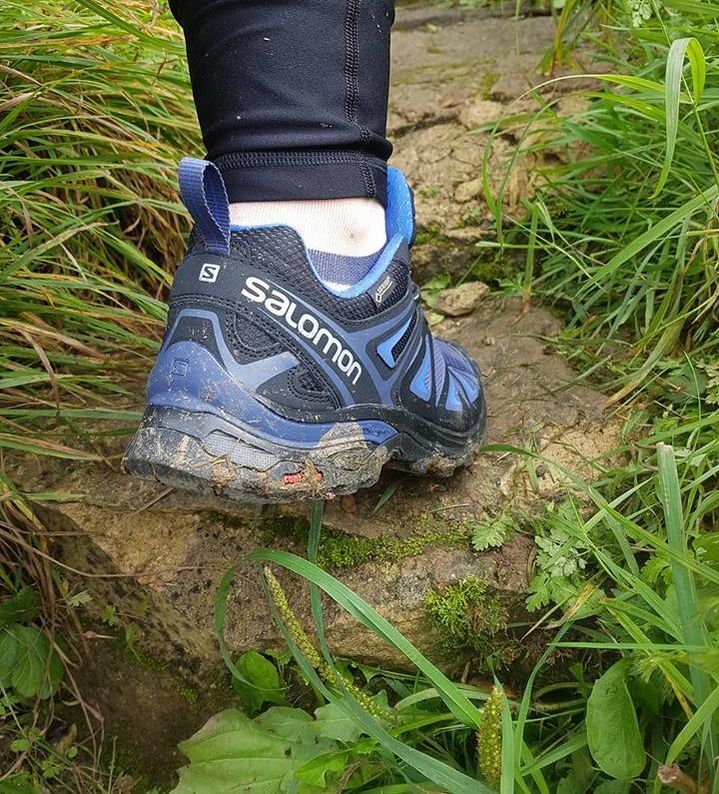Scree…
I have a long held hatred of it. I dislocated my kneecap slipping on scree last October halfway up Mt Kilimanjaro. We’re not on speaking terms and I’m always very nervy when having to walk downhill on it now, thanks to the fear of my knee going again at any time.
So when I was sent the Salomon X Ultra 3 GTX hiking shoe, which claims to use Descent Control technology to tackle technical hikes and control movement on tough descents, I was dubious to say the least.
As it turns out, all fear was entirely misplaced…

We all know that the first rule of new shoes is not to wear them straight out of the box for a 14.5 mile yomp/trail run around the countryside.
So what did I do? Exactly that. What better (though maybe not the most sensible) way to test them out!
They handled absolutely everything I threw at them. Mud, scree, gravel, grass… The Descent Control technology and grip rubber obviously works. These shoes use two different types of rubber on the sole, resulting in a more intense grip. A special patterned area on the heel grabs terrain more aggressively, giving you more control when moving. They felt very stable on my feet without being too inflexible (as some shoes can be) and they have protective toe caps and heel straps, too.
There is a good amount of cushioning on the footbed and heel, and they feel very airy (if that makes sense) under your feet. As with many Salomon shoes, they have the built in Ortholite footbed, which is supportive, breathable and cooling.
How do they cope in water? Not once did my feet slide out from under me, and not once did I feel unstable. The outside layer is water resistant and there’s a Gore-Tex waterproof, breathable membrane too which means they handle wet conditions very well (great for those soggy fields and streams).
On top of this? They feel very light on your feet weighing in at 660g for the pair, so lighter than their predecessor the X Ultra 2!

As with many other Salomon shoes, they now have the Quick-lace system, designed to get the shoes on and off very quickly, which I will admit took a little getting used to, but it’s actually very efficient.
The shoes stayed tight all day and the pocket to tuck them out of the way was great (when I worked out where it was). The tongue is connected to the upper layer too, which keeps all the little stones and bits of dust out of the shoe, and this seemed to work very well!


So, my final thoughts?
They feel far more durable than some other hiking shoes I’ve tried in the past. Obviously, if you have a heavier pack or will be on rocky, difficult terrain then a boot is still the way to go, but they’re definitely lighter and, in my opinion, don’t sacrifice protection for this.
They’re true to size, but if you have wide feet I would size up, perhaps. They required no break in (as you can see above!) and my feet finished that 14.5 miles with no blisters, no rubbing spots and no pain. That to me was enough, but on top?
They looked good, performed well and have found a permanent spot in my shoe cabinet.

